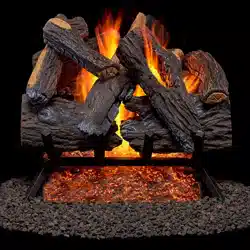Loading ...
Loading ...
Loading ...

www.factorybuysdirect.com
200247-01A16
TROUBLESHOOTING
WARNING: If you smell gas:
• Shut off gas supply.
• Do not try to light any appliance.
• Do not touch any electrical switch; do not use any phone in your
building.
• Immediately call your gas supplier from a neighbor’s phone. Fol-
low the gas supplier’s instructions.
• If you cannot reach your gas supplier, call the re department.
WARNING: Only a qualied service technician should service and
repair heater. Make sure that power is turned off before proceeding.
Turn off and let cool before servicing.
CAUTION: Never use a wire, needle, or similar object to clean
ODS/pilot. This can damage ODS/ pilot unit.
IMPORTANT: Operating heater where impurities in air exist may create odors. Cleaning sup-
plies, paint, paint remover, cigarette smoke, cements and glues, new carpet or textiles, etc.,
create fumes. These fumes may mix with combustion air and create odors.
Note: All troubleshooting items are listed in order of operation.
Problem Possible Cause Corrective Action
Log set is smoking/ soot-
ing excessively
Note: It is natural and
unavoidable for vented
gas log sets to produce
moderate levels of car-
bon (soot) where ames
contact the logs.
1. Poor fuel quality.
2. Fireplace venting system not
drafting properly.
3. Excessive flame impinge-
ment or blockage.
4. Improper fuel/air mixture.
5. Excessive gas supply/ pres-
sure.
1. Contact local natural gas
company.
2. Adjust damper wide open
and/or have fireplace and
venting professionally
cleaned and checked.
3. Separate the logs to allow
more ame passage.
4. Remove any foreign items
from the ame pattern.
5. Preheat flue in very cold
weather.
Burner is excessively
noisy. Note: The move-
ment and combustion of
gas will create low, un-
avoidable levels of noise.
1. Passage of air/gas across
irregular surfaces.
1. Relieve any tight bends or
kinks in gas supply line.
Burner ame is too low or
too high.
1. Incorrect gas supply or pres-
sure.
2 Blocked burner orifice or
burner manifold ports.
3. Improper burner orice size.
1. Check for proper gas supply
pressure.
2. Free burner orice and mani-
fold ports of any burrs, paint,
or other blockage.
3. Verify proper burner orice
sizing (see page 3).
Loading ...
Loading ...
Loading ...
